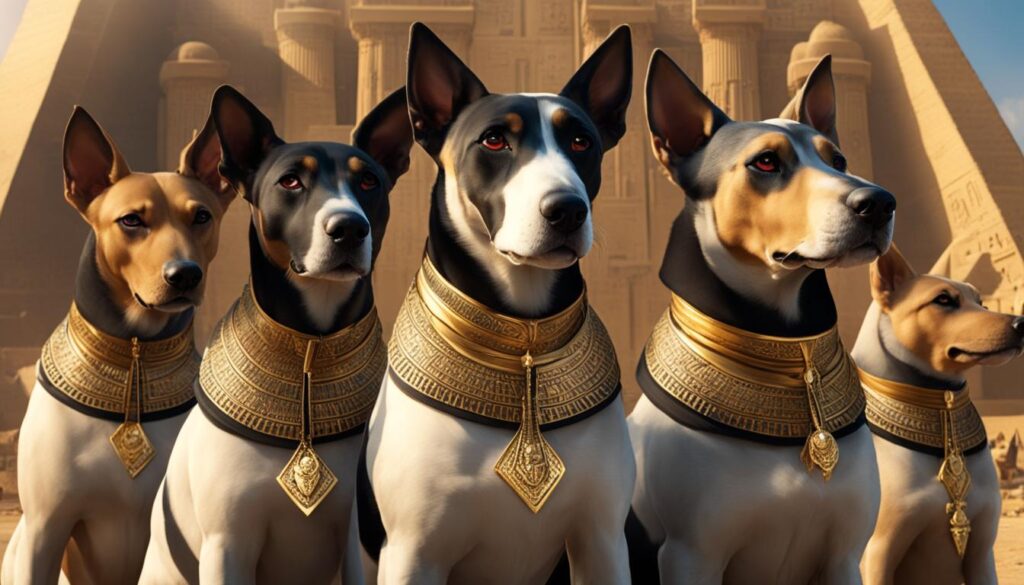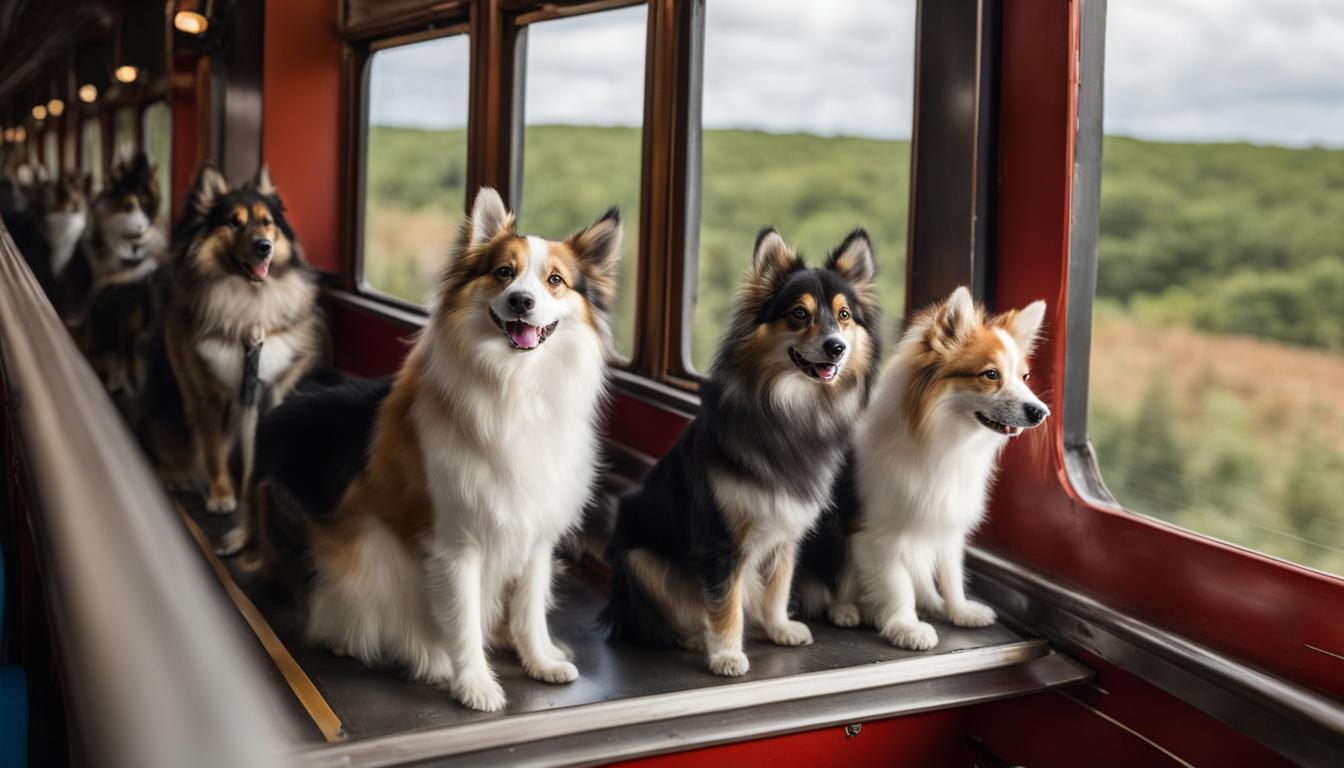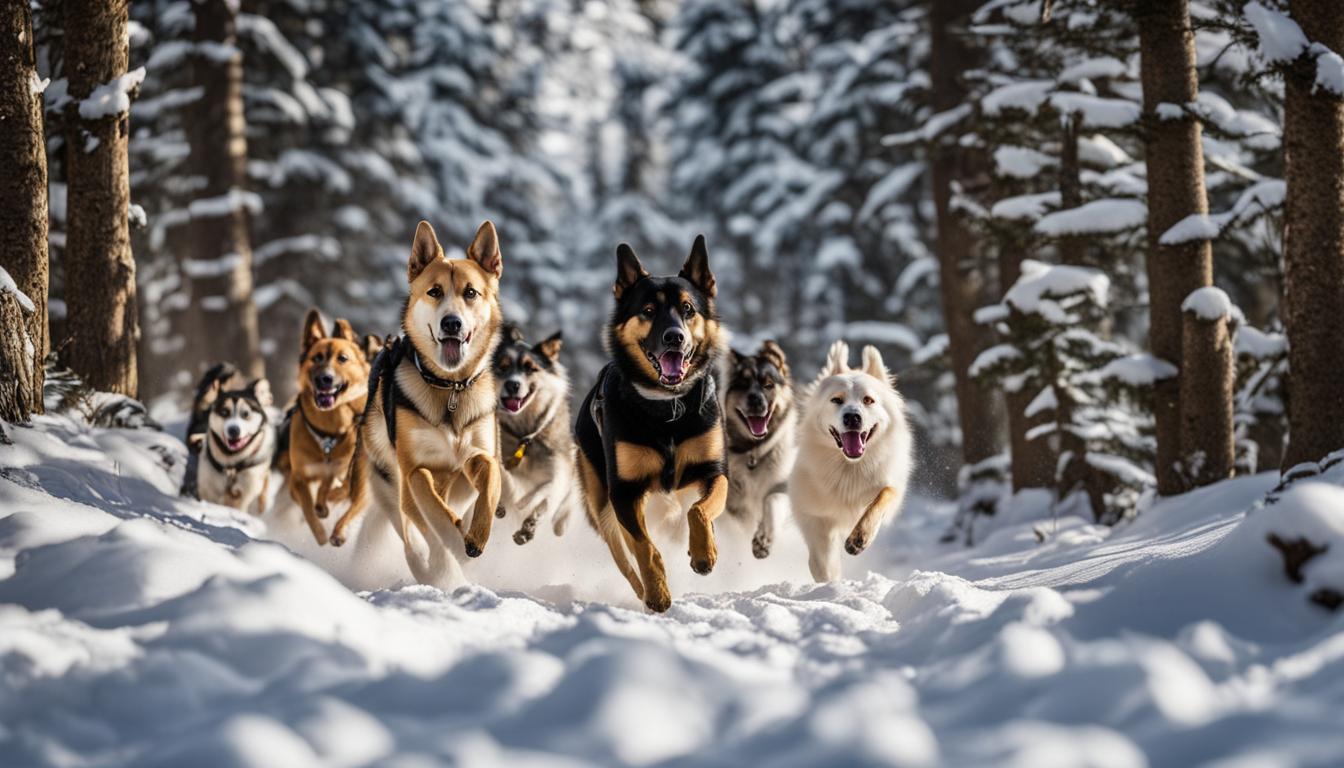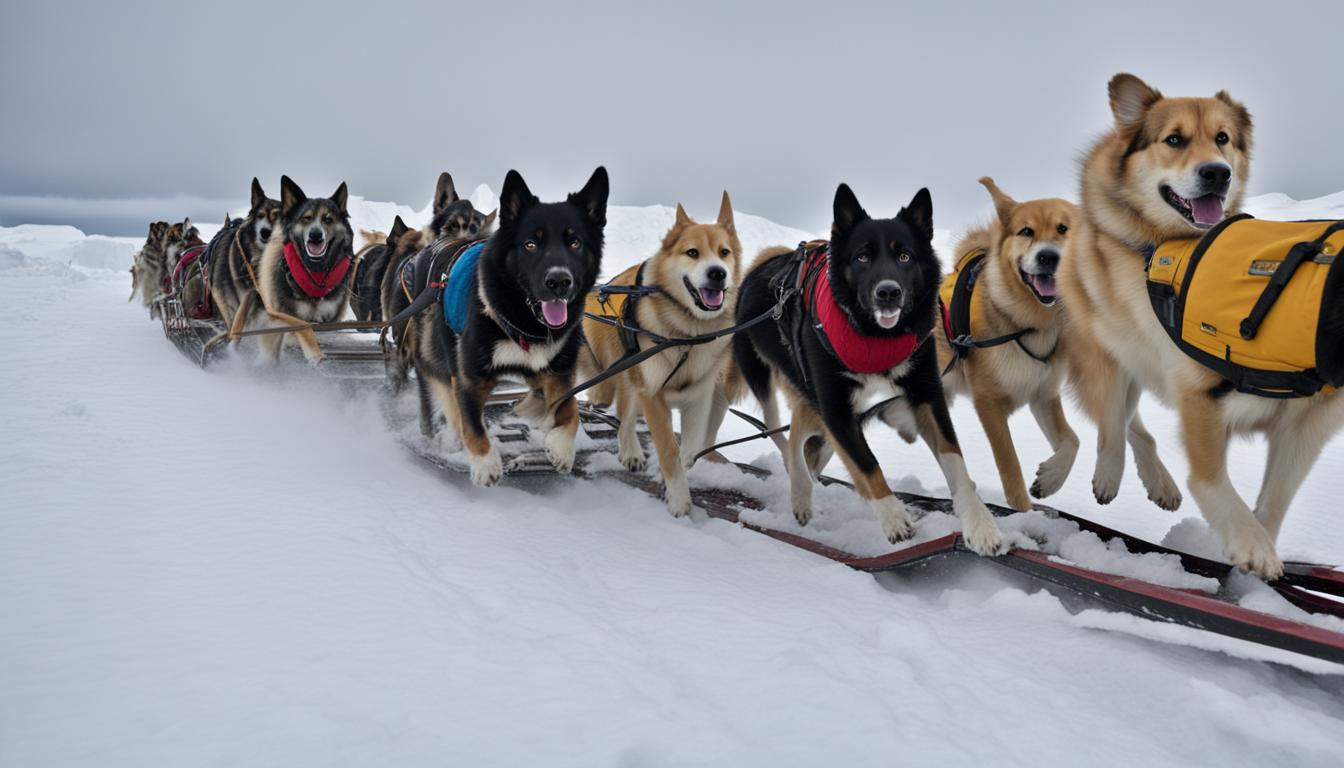Welcome to a fascinating journey through time as we delve into the role of dogs in ancient civilizations. These loyal companions have been by our side since the dawn of human history, playing diverse roles and leaving their pawprints on the tapestry of our past. From ancient Mesopotamia to the enigmatic land of ancient Egypt, these four-legged friends held a special place in the hearts and lives of our ancestors. Let’s embark on this adventure and uncover the intriguing tales of ancient dog breeds, their significance, and the profound bond between humans and dogs.
Key Takeaways:
- Ancient civilizations revered and valued dogs, recognizing their unique attributes and contributions to society.
- Archaeological evidence reveals the presence of domesticated dogs dating back thousands of years.
- Dogs in ancient Mesopotamia served as companions, guardians, and protectors.
- Ancient Egyptians believed in the important role of dogs as guardians and guides in the afterlife.
- The origins of dog domestication are still a subject of debate, with multiple theories and discoveries challenging previous notions.
Dogs in Mesopotamia: Companions and Guardians
In ancient Mesopotamia, dogs held a significant role in the daily lives of the people. From providing companionship to acting as guardians, these loyal creatures were cherished members of society. The ancient civilization of Mesopotamia, located in the region of modern-day Iraq, was home to a rich cultural heritage that included a deep connection with dogs.
The Mesopotamians believed in the power and importance of dogs. In the legendary tale of the Epic of Gilgamesh, the goddess Ishtar, also known as Innana, was often portrayed with her hunting dogs. These dogs were not only her companions but also symbolized strength and protection. The Mesopotamians recognized the loyalty and bravery of dogs, which made them ideal guardians of households and herds.
The deep bond between the Mesopotamians and their dogs is evident in the archaeological findings. Dog collars, a symbol of ownership and protection, are believed to have originated in Mesopotamia. These collars were adorned with precious stones and metals, showcasing the value placed on these canine companions. Additionally, artwork and artifacts depicting dogs have been discovered throughout Mesopotamia, further highlighting their significance in the ancient civilization.
“The Mesopotamians viewed dogs as more than just animals; they saw them as loyal and devoted friends who could be trusted to protect their homes and loved ones.” – Archaeologist Dr. Emily Park
Table: Dogs in Mesopotamia
| Role | Description |
|---|---|
| Companions | Dogs provided companionship and emotional support to their owners, offering comfort and loyalty. |
| Guardians | Dogs were trained to protect households, herds, and valuable possessions, serving as a deterrent to potential intruders. |
| Hunters | Dogs played a vital role in hunting, assisting in tracking and capturing game for food. |
| Symbol of Strength | The strength and bravery of dogs were revered, leading to their portrayal as symbols of power and protection. |
Overall, the presence of dogs in ancient Mesopotamia extended beyond their practical uses. They were beloved companions, guardians, and symbols of strength in a civilization that deeply valued their loyalty and dedication. The enduring relationship between the Mesopotamians and their dogs highlights the timeless bond between humans and canines throughout history.

| Role | Symbolism |
|---|---|
| Guardians | Protection, security |
| Guides | Safe passage into the afterlife |
| Companions | Loyalty, devotion |
The Origins of Dog Domestication: One or Multiple Times?
Have you ever wondered where our furry companions, dogs, originated from? The exact origins of dog domestication have long been a subject of scientific debate. While some experts believe that domestication occurred around 10,000 years ago, others argue for a much earlier date of 30,000 years ago. It’s a perplexing puzzle that continues to intrigue researchers.
The question of where domestication happened is equally fascinating. Theories propose that it could have taken place in Europe, the Middle East, or East Asia. Each region presents compelling evidence, making it challenging to pinpoint a single geographic location for the birth of our ancient four-legged friends.
Recent genetic studies have further muddled the picture. Surprisingly, these studies suggest the possibility of multiple domestication events. It appears that different dog lineages emerged in both eastern and western Eurasia, pointing towards the idea that dogs were domesticated independently in separate regions.
This revelation challenges the long-held belief in a single domestication event and adds complexity to our understanding of the origins of these beloved canines. As we continue to unravel the mysteries of ancient dog history, one thing remains clear: our connection with dogs spans back thousands of years, making them an integral part of our shared human experience.
FAQ
When did dogs first appear in ancient civilizations?
Dogs have been a part of human history since ancient times, with the earliest evidence of domesticated dogs dating back to at least 12,000 years BCE in the Middle East.
What roles did dogs play in ancient societies?
Dogs played various roles in ancient societies, including companions, guardians, hunters, and as a part of the family.
How were dogs viewed in Mesopotamia?
In Mesopotamia, dogs held a significant place in society, viewed as companions, guardians, and even beings associated with healing.
What was the role of dogs in ancient Egypt?
Dogs in ancient Egypt played a significant role as guardians and guides, with the dog-jackal god Anubis believed to guide the souls of the deceased to the afterlife.
When and where did dog domestication originate?
The exact origins of dog domestication are still debated, with proposed dates ranging from 10,000 to 30,000 years ago and theories suggesting Europe, the Middle East, or East Asia.
Was there a single domestication event or multiple events?
Recent genetic studies suggest the possibility of multiple domestication events, with distinct dog lineages originating in both eastern and western Eurasia.





